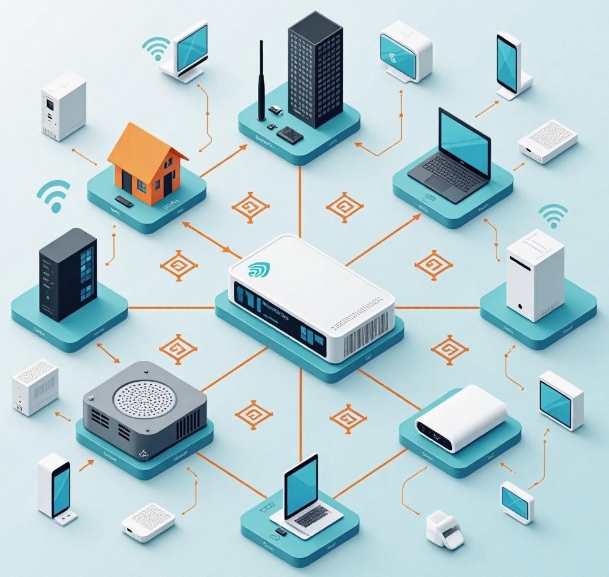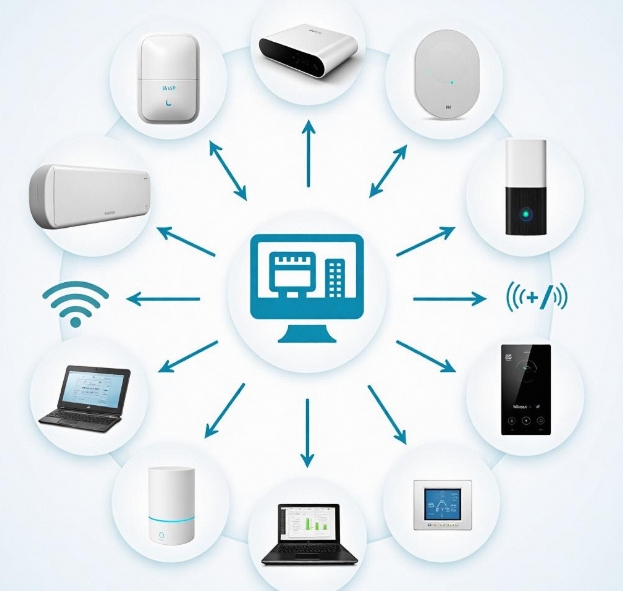Cross-platform interoperability and compatibility issues in IoT development.
- latest articles
- 1.DApp Development & Customization: Merging Diverse Market Needs with User Experience 2.Analysis of the Core Technical System in DApp Project Development 3.How to achieve cross-chain interoperability in Web3 projects? 4.How does the tokenization of points reconstruct the e-commerce ecosystem? 5.How to Set and Track Data Metrics for a Points Mall? 6.What is DApp Development? Core Concepts and Technical Analysis 7.Inventory of commonly used Web3 development tools and usage tips 8.Development of a Distribution System Integrated with Social E-commerce 9.Six Key Steps for Businesses to Build a Points Mall System 10.What is DApp Development? A Comprehensive Guide from Concept to Implementation
- Popular Articles
- 1.Future Trends and Technology Predictions for APP Development in 2025 2.Analysis of the DeFi Ecosystem: How Developers Can Participate in Decentralized Finance Innovation 3.From Zero to One: How PI Mall Revolutionizes the Traditional E-commerce Model 4.DAPP Development | Best Practices for Professional Customization and Rapid Launch 5.How to Develop a Successful Douyin Mini Program: Technical Architecture and Best Practices 6.Recommended by the Web3 developer community: the most noteworthy forums and resources 7.From Cloud Computing to Computing Power Leasing: Building a Flexible and Scalable Computing Resource Platform 8.Shared Bike System APP: The Convenient Choice in the Era of Smart Travel 9.How to Create a Successful Dating App: From Needs Analysis to User Experience Design 10.From Design to Development: The Complete Process of Bringing an APP Idea to Life
Background of Cross-Platform Interoperability and Compatibility Issues in IoT
The essence of the Internet of Things (IoT) is to connect various devices via the internet, enabling them to communicate and collaborate. These devices span multiple fields, from household appliances and vehicles to medical equipment, and are often designed and manufactured by different vendors using different operating systems and communication protocols. Therefore, achieving seamless connectivity in IoT requires addressing interoperability and compatibility issues between platforms.
1.1 Diverse Devices and Platforms
In IoT systems, there is a wide variety of device types with different functions, commonly including sensors, cameras, smart home devices, and industrial control equipment. These devices may be developed based on different hardware architectures, operating systems, and programming languages. For example, some devices run Linux-based operating systems, while others may use embedded operating systems or RTOS (Real-Time Operating Systems). In terms of platforms, cloud computing platforms, edge computing platforms, and local computing platforms each have different technical architectures, posing significant challenges to device interconnectivity.
1.2 Differences in Communication Protocols
Communication between IoT devices relies not only on hardware platforms but also on various communication protocols. Common protocols include Wi-Fi, Bluetooth, ZigBee, LoRa, 5G, and NB-IoT. These protocols have different characteristics such as transmission rates, power consumption, and coverage ranges. Moreover, the development and implementation of protocol standards are typically led by different organizations or companies, leading to communication compatibility issues between cross-platform devices. Selecting the appropriate protocol and ensuring seamless conversion between protocols has become a critical issue in IoT development.
1.3 Inconsistency in Data Formats and Standards
The lack of uniformity in data formats and standards is another prominent factor in cross-platform interoperability and compatibility issues in IoT. Data generated by different devices often use different formats, and even within the same field, data standards may vary. For example, in the smart home sector, some devices use JSON format for data transmission, while others may use XML or Protobuf for data exchange. Additionally, the lack of unified industry standards exacerbates the difficulty of data sharing and cross-platform interoperability.
Technical Challenges of Cross-Platform Interoperability and Compatibility
In IoT development, the technical challenges of cross-platform interoperability and compatibility can be analyzed from multiple perspectives.
2.1 Device Heterogeneity
The heterogeneity of IoT devices is one of the biggest obstacles to achieving cross-platform interoperability. Hardware platforms and operating systems of devices can vary widely, necessitating the development of specific drivers and application interfaces for each type of device. However, as the number of devices continues to grow, developing and maintaining drivers and interfaces for different devices becomes increasingly complex. Therefore, designing a universal hardware abstraction layer that allows devices on different hardware platforms to operate through a unified interface is a major challenge in IoT development.
2.2 Diversity of Communication Protocols
As mentioned earlier, IoT devices support a wide variety of communication protocols, each with different characteristics and suitable scenarios. In a single IoT system, different devices often need to transmit data through multiple protocols. For example, some devices may use Wi-Fi for high-bandwidth data transmission, while others use ZigBee or LoRa for low-power, long-distance data transmission. Achieving interoperability between these protocols, especially in resource-constrained environments, is a significant technical challenge for cross-platform interoperability and compatibility.
2.3 Incompatibility of Data Formats and Semantics
Differences in data formats and semantics between different devices and platforms complicate data exchange. For instance, some devices may perform calculations based on raw sensor data (such as temperature and humidity), while others may transmit data after processing it with specific algorithms. Additionally, due to the lack of unified industry standards, interpretations of data semantics may vary. Ensuring semantic consistency of data between devices while flexibly handling different data formats is one of the difficulties in IoT system development.
2.4 Security and Privacy Protection
IoT devices often involve large amounts of sensitive data, such as personal privacy and industrial control data. Cross-platform data exchange and communication may introduce potential security risks, so security and privacy protection must be considered during cross-platform interoperability. Ensuring encryption and authentication during data transmission and storage between different platforms to prevent data leaks or tampering is another major technical challenge in IoT development.
Solutions to Cross-Platform Interoperability and Compatibility Issues
To address cross-platform interoperability and compatibility issues in IoT development, the industry has proposed various solutions.
3.1 Standardization and Open Protocols
To promote interoperability between IoT devices, many organizations and industry alliances are committed to developing unified standards and open protocols. For example, the OPC UA (Unified Architecture) protocol, common in Industrial IoT (IIoT), provides a standardized communication framework that supports seamless connectivity between devices from different manufacturers. Similarly, the 6LoWPAN (IPv6 over Low-Power Wireless Personal Area Networks) protocol, based on IP, provides a foundation for cross-platform communication for low-power devices. Additionally, open-source projects like MQTT and CoAP offer lightweight message transmission protocols that support cross-platform, low-power device communication.
3.2 Virtualization and Abstraction Layer Technologies
To address the heterogeneity of IoT devices, virtualization and abstraction layer technologies are widely used. By designing a unified hardware abstraction layer, developers can hide hardware differences of different devices within the operating system and applications, allowing devices to interact through a unified interface. Meanwhile, virtualization technologies in cloud and edge computing platforms abstract the differences between devices and platforms, making device interoperability more convenient.
3.3 Edge Computing and Middleware Platforms
Edge computing technology reduces the difficulty of cross-platform interoperability by processing data closer to the devices. Deploying middleware on edge devices enables conversion between different protocols and data formats, thereby supporting compatibility between different devices. Middleware platforms like Eclipse IoT and Kaa IoT provide a set of universal interfaces and protocols to help developers achieve cross-platform data transmission and device management.
3.4 Cloud Platforms and Data Standardization
As the core infrastructure of IoT systems, cloud platforms support data exchange and processing between devices. By aggregating data from IoT devices to the cloud, developers can use standardized APIs and data format interfaces provided by cloud platforms to achieve seamless interoperability between devices. Additionally, leveraging the powerful computing and storage capabilities of cloud platforms, developers can perform data cleaning, transformation, and analysis, further enhancing cross-platform compatibility.
Future Trends
With the continuous development of IoT technology, cross-platform interoperability and compatibility issues will gradually be resolved. In the future, cross-platform interoperability in IoT will rely more on standardization, open protocols, and intelligent solutions. Here are some potential trends:
4.1 Intelligent Protocols and Adaptive Networks
With advancements in artificial intelligence and machine learning, future IoT systems will be able to adaptively select the most suitable protocols for communication based on actual application scenarios. This intelligent protocol selection and adaptive networking will significantly improve compatibility between devices and reduce the need for manual intervention.
4.2 Cross-Domain Integration and Ecosystem Development
Cross-platform interoperability in IoT is not limited to communication between devices and platforms but also involves collaboration across different industries and domains. In the future, with the maturation of IoT ecosystems, cross-industry and cross-domain integration will become the norm, with different IoT applications sharing data and resources to promote collaborative industry development.
4.3 Application of Blockchain Technology
Blockchain technology, as a decentralized distributed ledger technology, has broad application prospects in IoT. Blockchain can provide trusted data exchange and verification mechanisms for IoT, ensuring the security of data sharing and communication between devices, thereby further promoting cross-platform interoperability and compatibility.
Conclusion
Cross-platform interoperability and compatibility issues in IoT development involve multiple aspects, including device heterogeneity, differences in communication protocols, inconsistent data formats, and security risks. Although addressing these issues presents many challenges, with continuous technological advancements, solutions such as standardized protocols, virtualization technologies, cloud computing platforms, and intelligent protocols are gradually driving IoT toward greater efficiency and intelligence. Looking ahead, IoT will no longer be a collection of isolated devices and platforms but an interconnected, collaboratively developed intelligent ecosystem.
-

How to Use IoT Development to Enhance Supply Chain Efficiency
With the rapid development of the global economy and the deepening of digital tr···
-

Development and Innovation of the Internet of Things in the Healthcare Sector
With the rapid advancement of information technology, the Internet of Things (Io···
-

Data Storage and Analysis Methods in IoT Development
The Internet of Things (IoT) is one of the most revolutionary innovations in tod···

 Blockchain
Blockchain












